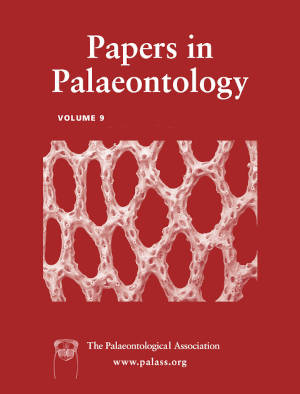Article: New insights into the sea spider fauna (Arthropoda, Pycnogonida) of La Voulte-sur-Rhône, France (Jurassic, Callovian)
Publication: Papers in Palaeontology
Volume:
9
Part:
4
Publication Date:
2023
Article number:
e1515
Author(s):
Romain Sabroux, Gregory D. Edgecombe, Davide Pisani, and Russell J. Garwood
DOI:
10.1002/spp2.1515
Abstract
Abstract Three species of sea spider (Arthropoda, Pycnogonida) have been described from the Middle Jurassic (Callovian) Konservat-Lagerstätte of La Voulte-sur-Rhône: Palaeopycnogonides gracilis, Colossopantopodus boissinensis and Palaeoendeis elmii. These fossils were initially attributed to three extant families or superfamilies, justifying their use as calibration points in a recent tree-dating analysis. However, their taxonomic affinities are still debated. Our knowledge of the morphology of these Jurassic sea spiders is limited by prior investigation with only light microscopy and radiographs, such that further morphological details such as cephalic appendages (chelifores, palps, ovigers) remain poorly documented. Here, we reinvestigate the La Voulte-sur-Rhône fossils using x-ray microtomography and reflectance transformation imaging. A new specimen, tentatively attributed to P. gracilis, was found using x-ray microtomography, while another fossil initially interpreted as Palaeoendeis elmii may also be related to this species. We attribute all fossils to Pantopoda, crown-group Pycnogonida. Palaeopycnogonides gracilis had ovigers in at least one sex and had chelifores and palps that were either reduced or absent. Together, the cephalic appendage set and the structure of the ovigers are unique among Pantopoda, and this species is reassigned to the new family Palaeopycnogonididae. Colossopantopodus boissinensis lacked chelifores but had palps and ovigers, the latter with the typical structure shown by extant Colossendeinae, to which we attribute the fossil. The absence of chelifores and palps in Palaeoendeis elmii and the structure of its ovigers indicate affinities with Endeidae. The impact of these new taxonomic assignments on the way Jurassic sea spiders can be used as fossil calibrations is discussed.
